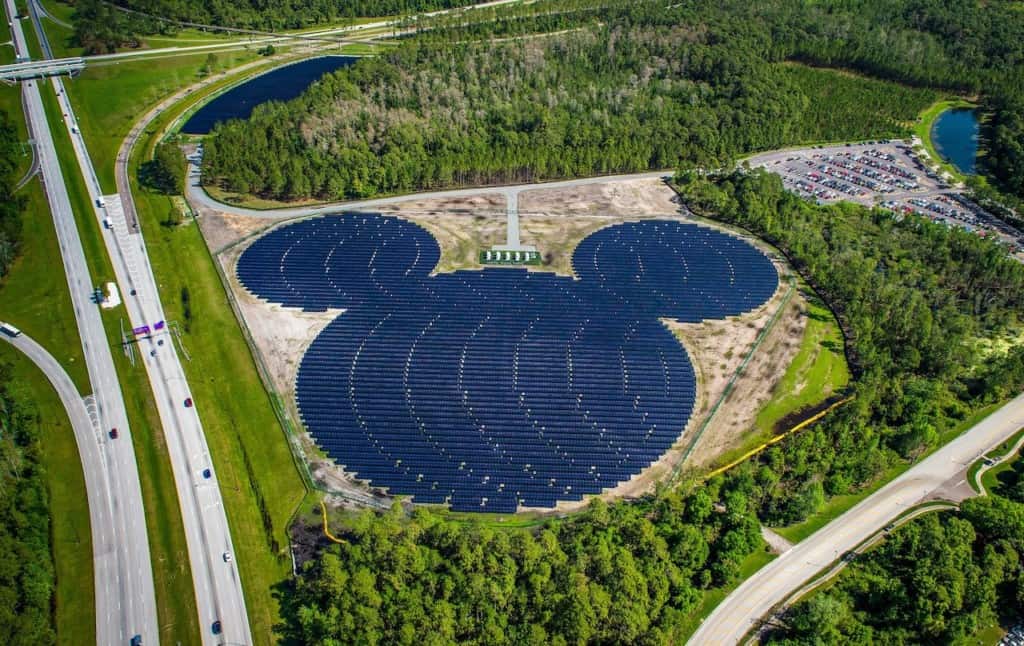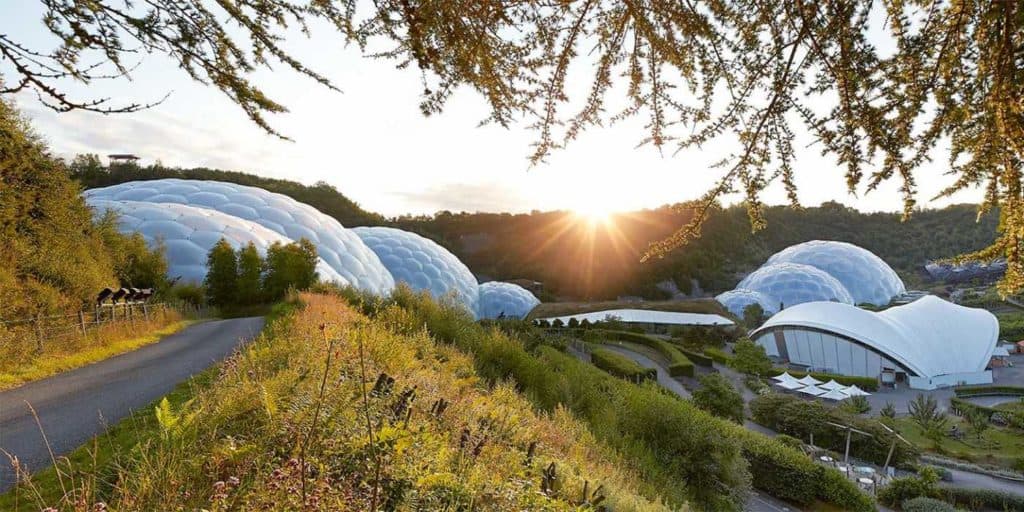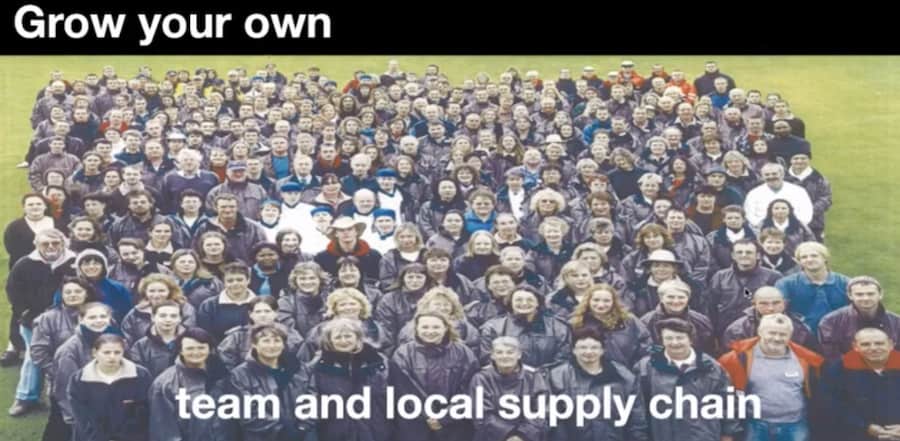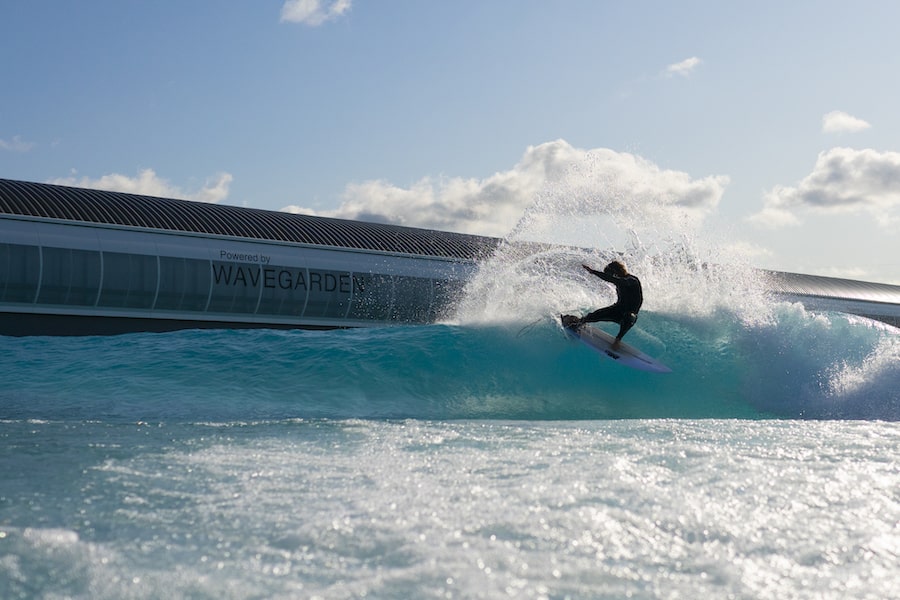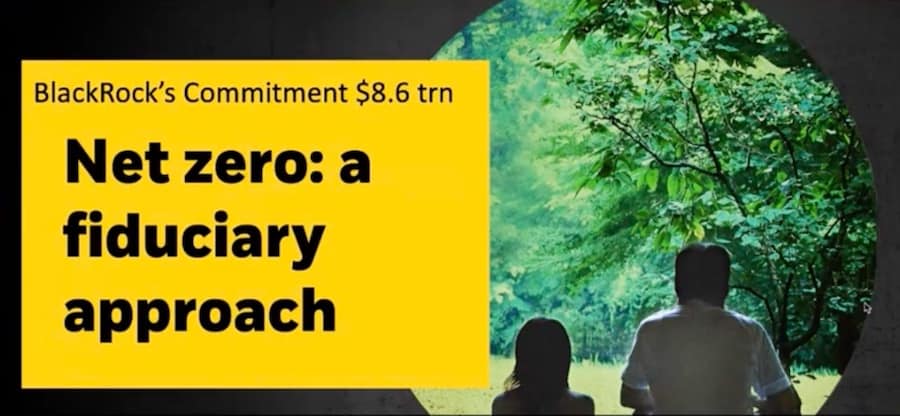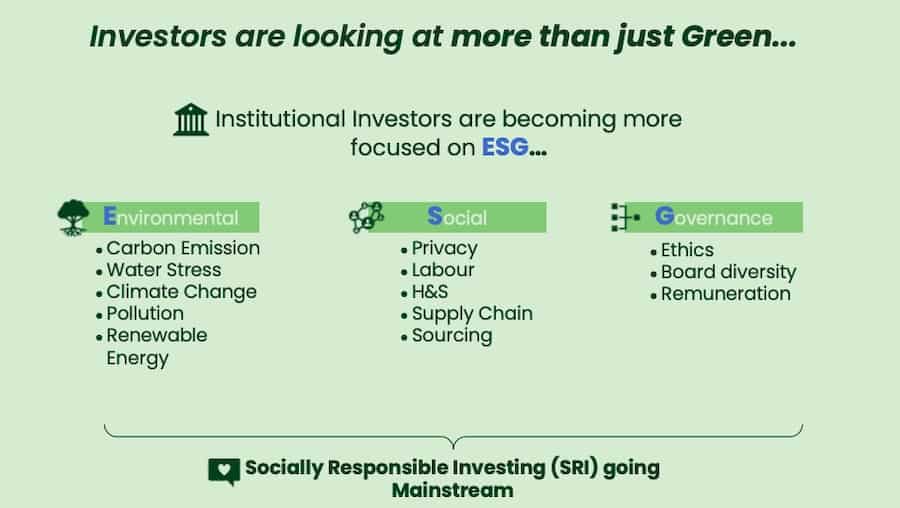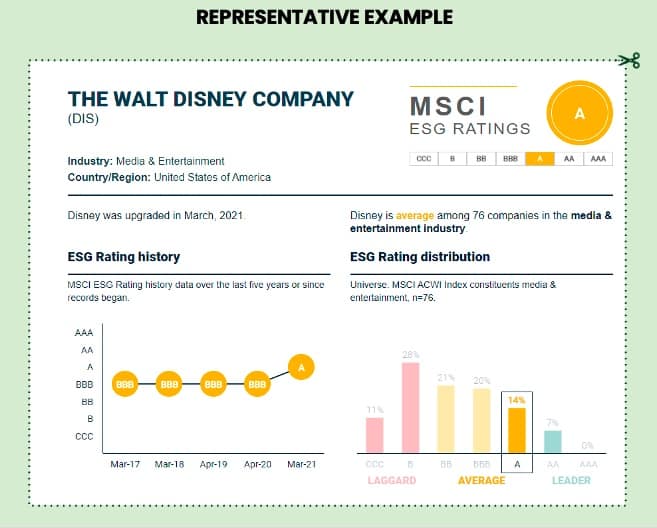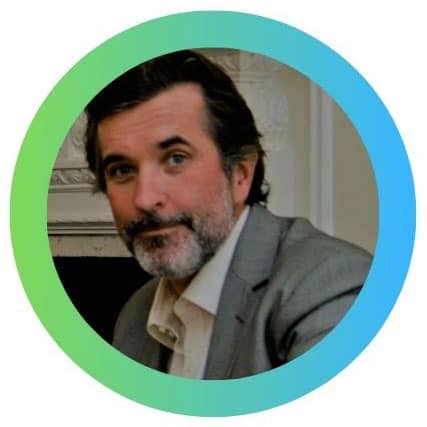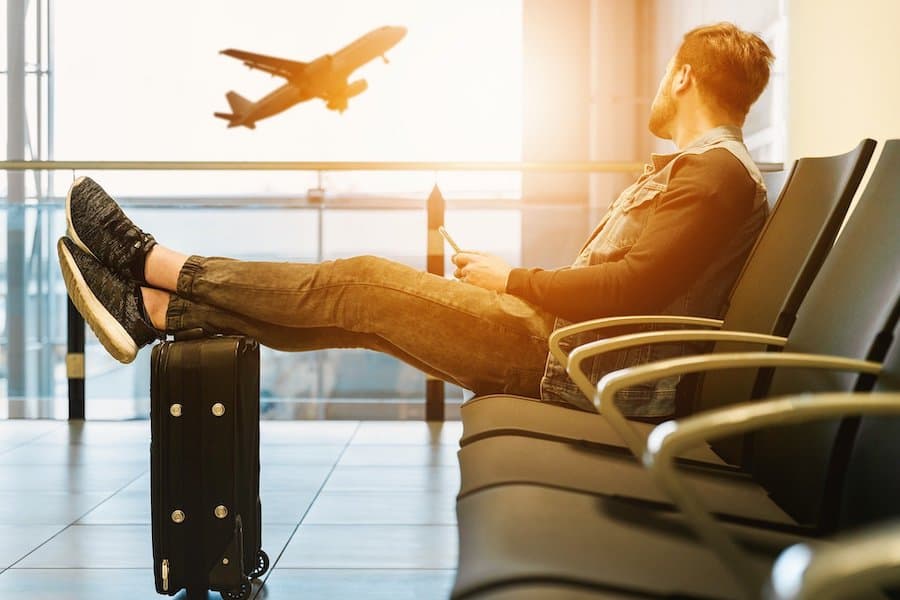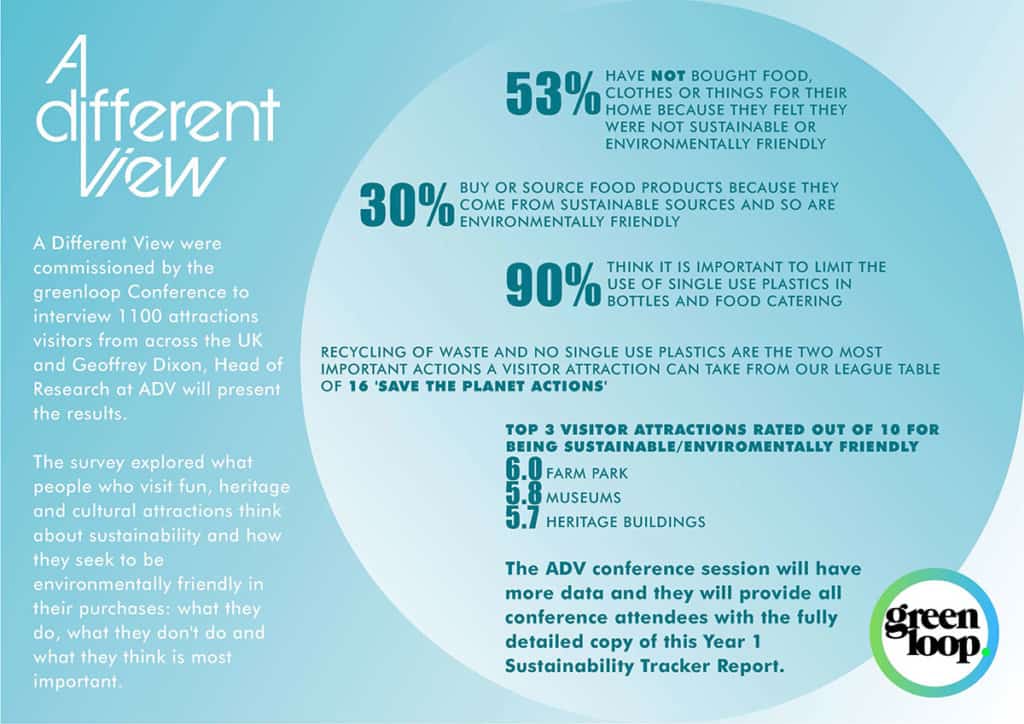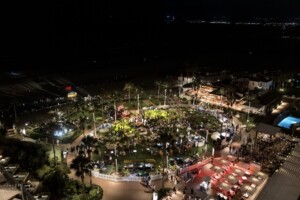The attractions industry is making a lot of progress when it comes to sustainability, as we recently found out at the inaugural greenloop conference, and we all know that we should be working towards a greener, more sustainable way of living and working. But doing so doesn’t just have positive outcomes for the planet, it also has beneficial financial implications for operators.
To explore how sustainable policies and actions can help attractions to save money and to get ahead of the competition, blooloop spoke to Gaynor Coley, Chairman of the Board at The Wave & previous MD of the Eden Project; Philip Shepherd, ex-PWC and an advisor to the leisure industry; Geoff Dixon, Head of Research at A Different View and Michael Collins, Senior Partner at Leisure Development Partners.
Finding the sweet spot
Gay Coley is Chairman of the Board at The Wave, Bristol’s new inland surfing destination. She was also one of the founders of the Eden Project and served as its Managing Director for 13 years, before joining the Royal Botanic Gardens, Kew as Director of Public Programmes. Over the past five years, she has been working on sustainable development for leisure and tourism destinations.
She begins by asking a key question about the quest for sustainable attractions: “Are we doing this for a purpose that is conflicted with money, or can we start to see a sweet spot where we get great environmental activity and great social impact combined with building wealth?”
Boom and bust
“Fantastic things were created by finding that wealth,” explains Coley. “If we look at the last 200 years, then we can see that there has been a dramatic impact on things that we all care about. We’ve seen a massive decline in extreme poverty, on a global basis. We’ve seen a great increase in basic education, literacy and democracy, alongside big decreases in child mortality.
“But as we went through that period of wealth creation, it started to become clear that there was an impact from having all that wealth created. One that we really weren’t taking into account. We can’t create that wealth without looking at the planet as well.”
“By the 1990s, we started to get a sense as to how urgent that challenge is, and also what the impact might be of that hedonistic rush for wealth.
“Now, we know have to find a different way. It’s about wealth creation and it’s about creating great communities but also with the right governance.”
The Eden Project: creating a sustainable attraction
In 1998, Coley took a leap of faith from her job as Director of Finance at Plymouth University and began working with the Eden Project team in Cornwall.
“I got introduced to what was described to me as a small group of madmen. They were trying to build the eighth wonder of the world in a clay pit in Cornwall. And I was asked to go and see if I’d help them build a business plan and raise the funding.
“I asked the question, ‘How much money do you have in the bank?’ And it’s gone down in history that that was the longest period of time that Tim [Smit] has ever been silent, and then eventually he piped up, ‘We’ve got £3000.’
“So, I knew it was a tough road. But we went down that road with conviction, and with fellow travellers, like-minded people, both in the public sector who wanted the economic impact, but also in the private sector, and we managed to pull the project off.
“Two years later we had this a regenerated site, but also this engine that would regenerate the local economy. Many people think that Eden continues or continued beyond the capital construction to be revenue funded, and that just wasn’t the case. We had some grant money to build the capital, and to do the construction. But we’ve always had to generate our own revenue.
“We knew we had to drive our own profits for a purpose. And so what was inside, making sure that people would come and come again, and spend their money with us, rather than with any alternative, was absolutely critical. The mechanisms that we use was the scale, but also really using the skills of entertainment, and using that entertainment to wrap around public education.”
A local team
“In many ways, we were trying to build lots of infrastructures that hadn’t been yet built. There was no such thing as a community interest company. So part of the reason why we’re a charitable trust and a trading company is because there wasn’t a social enterprise structure. We started to design that, and the legal firm that we work with has gone on and they took forward the community interest company structure which is fantastic now.
“But actually this is not about charity. It’s about how we use the engine of business to make the change. And so part of what we knew we had to do was to look for different ways of delivering our business model. For instance, we didn’t import very expensive staff from around the globe, we grew our own.”
In year one, with a staff of only 200, The Eden Project expected to get around 750,000 visitors.
“In fact, almost 2 million people came,” says Coley. “The team was 50% recruited locally, and they really valued that and because of that, they went an extra mile. They were unbelievable. Knowing that in the core of your business, you’ve got such a valuable asset was really important, and we took the same approach with our supply chain.
“We worked, as we built the site over a two year period, to try and get small companies to link together.”
Better for the environment, better for the customer
“One of the sweet spots that we found was, in year one we had disposables. But then our head of catering did the maths on what was better for the environment. If we used real china and washed it up, it was absolutely clear that this was better for the environment and better for the customer. And we got a better margin on it because it was better for the customer.”
“20 years later, here I am, as chair of the board at The Wave, we’ve just done exactly the same exercise. COVID is a complication. But as far as possible we are using real china. This is so that our catering supports our real mission, which is about healthy bodies, healthy minds, and healthy communities.
Times are changing
“In the industry, we’ve had as tough a year as I think any of us can remember,” said Coley. “And there were a lot of predictions around the fact that the pandemic would slow the action on climate change as we got into a potential financial emergency. But actually, the opposite has happened.
Fink says is that climate risk is investment risk. There will be a significant reallocation of capital.
“When you have somebody like Larry Fink, Chief Exec. of BlackRock, in his annual letter to corporate CEOs, saying that we have to deal with this existential threat, then we know we’ve got a seismic shift. Fink says is that climate risk is investment risk. There will be a significant reallocation of capital.”
“Plus, on the other side of the level, our consumers are shifting and they’re going to vote with their money. Their wallet is their weapon, they’re going to vote against unsustainable brands. So, the market is moving on the consumer side as well as the investor side.
“It’s not just about compliance. It’s actually about our ability to be able to attract future investment. And it is about how we can maintain good value for our customers, but also be ahead of the curve in terms of where their interests and their brand values are moving.
“Right now, we have the audience. We know that there’s an appetite to get back out and have a great experience with your family. And we also have the muscles to make a significant change when it comes to sustainable attractions.
“But it’s complex too. We want to make a profit, we want to make sure we’re financially sustainable. One of the tasks is to see where we find the sweet spot and to cut to the action.”
The green pound
Philip Shepherd then spoke about the topic of sustainable attractions from the investment side. Shepherd is a board member and adviser to several businesses within the hospitality and leisure sector and was previously a partner at PwC. He now consults on strategy, financing, operations and transactions across the sector.
“Over many years, we’ve been talking about the green pound. But it’s always felt a bit discretionary when the bottom line comes into play,” he says. “However, now things are changing quite dramatically.”
“Clearly, there’s a huge shift in what the customer is doing. Now, they’re demanding that products and brands share the values that they do. And maybe they’re willing to pay for that. Or, if those values aren’t there, they probably won’t turn up.
“The staff is absolutely critical, as well, certainly amongst the younger staff. The cost of recruitment and attrition is considerably reduced if you’re applying some of these principles.”
New ESG standards
“But what about investors? If you’re seeking investment, you’ve got to be really considering how you meet some of the standards required.”
Shepherd explains how investors are becoming more focused on ESG: Environmental, Social and Governance:
“It’s more than just the environmental side of things, the carbon emission or the water issues, climate change, pollution, etc. Companies also need to consider social elements. For instance, things like privacy rules and how they’re handling labour, health & safety, their supply chain and sourcing. And then governance is around their business ethics for diversity and remuneration. And all this is under this wrapper of Socially Responsible Investment (SRI).
The wave is breaking
“This is something which we have been discussing for many years but it’s really felt that now it’s going mainstream. The wave is now breaking, and there are four main drivers for this. We’re looking at this significant societal shift, due to massive public awareness about what we’re doing to our planet.
We’re looking at this significant societal shift, due to massive public awareness about what we’re doing to our planet.
“The millennial population, which is already now reaching their 40s, are clearly heavy influencers. Plus things like the Black Lives Matter protests, which has shone a light on many inequalities in society. And of course, COVID-19 has highlighted issues around health and safety, both for the staff and the customers.”
“That on its own isn’t going to shift the industry. But what’s been quite interesting in all the research is that those funds that have invested into assets that meet an ESG standard have tended to outperform, particularly over the last two years. They had greater resilience in general.
“So that argument alone is tending to drive institutional investors to consider this kind of fund and investment. Investor demand, both institutional and retail is driving, businesses and investors into looking at ESG funds. Finally, there is increasing regulatory focus, particularly in Europe. The EU is ramping up regulation for financial institutions to invest in sustainable assets, and this is going to be followed by a lot more disclosure for the industry.
Investor demand, both institutional and retail is driving, businesses and investors into looking at ESG funds.
“In the US there has been a shift too. Donald Trump pushed it completely in the other direction and was quite negative around some of these sustainable investment initiatives. Now, Joe Biden has swung it completely the other way. That’s very important because of course, the US is a major market.
The data is compelling
Shepherd then shared some compelling stats:
“ESG assets in Europe are forecast to grow exponentially from about 15% last year to over 50% of the total invested assets over the next five years. And Europe represents about 75% of global investment assets. So, that is critical because these institutional investors are only going to be investing in businesses that meet these standards.
“BlackRock, one largest fund managers in the world with $7 trillion assets, is now entirely focused now on this area of investment.
“There’s been an outperformance of ESG stocks in the last few years, about two 4% per annum over non-ESG stocks.
“These are institutional investors and many of you thinking well that’s not so relevant to me, but institutional investors invest in private equity. And private equity and sales are now massively taking ESG into account in their main funds, but also creating separate funds. For example, KKR has just launched a 1.3 billion social impact fund.”
How does this apply to sustainable attractions?
If operators want to raise money, they will have to meet these standards, says Shepherd:
“So, what are your financing objectives? Are you raising capital for a new venture? Are you looking for an IPO or looking to sell the business or raise investment for exposure? It’s more than likely that, wherever you’re sourcing your capital, that institution will have some of these newer ESG ratings. And you’ve got to consider not just how green you are, but also your social standards and governance.”
If operators want to raise money, they will have to meet ESG standards.
“Clearly, one of the challenges is how do you get a rating? What does it mean and how do you demonstrate that you have met these standards? There are a number of different rating agencies out there, such as MSCI or Sustainalytics. For example, MSCI is giving a rating, a bit like a financial rating from triple-A downwards.”
“Disney has run for a few years at a triple B on their list, but recently has gone up to an A. What’s been quite interesting during the pandemic is that while Disney’s credit rating has gone down, its ESG rating has grown. And, in many ways, that has compensated and is what continues to make it highly attractive for investors.
“Being aware and on top of this ESG or sustainability is critical for you in a business. Not just for critical core commercial reasons, but also for raising funds.”
Sustainable attractions & the bottom line
Michael Collins, a Senior Partner at Leisure Development Partners (LDP) then explored how environmental stewardship may affect the bottom line effectively for an operating business. Collins has more than 2 decades of consulting experience in leisure and entertainment real estate. He was a senior associate at ERA, before co-founding LDP in 2008.
“Sustainability is certainly it’s a hot topic for us in our business,” says Collins. “We’re specialists in the economics of visitor attractions, looking at things like feasibility and improvement strategy. Ten years ago we weren’t, in the feasibility process, hearing too much about good environmental practice and sustainable attractions. Unless the project was specifically a nature-oriented attraction.
“Now, this should be top of the agenda in the feasibility process for any attraction in the planning stages, and for any business looking to improve or add.
“Ignore the environment at your peril. As a visitor attraction, your visitors aren’t ignoring it. So you, as an operator or investor in this space, can’t.
Ignore the environment at your peril. As a visitor attraction, your visitors aren’t ignoring it.
“Consumers will vote with their feet and these things are only going to shift in one direction. Millennials really care about the environment, and with Gen Zed coming through, it is really high on their agenda. Schools have been pushing greater knowledge of the environmental impact of our decisions as well. And parents care more too, so there is a generation coming through that will be even more passionate about this.”
Environmentally friendly choices
Collins says that consumers choose sustainability, and presents some statistics to back this up, looking at sales across three different product categories throughout a one-year period: chocolate, coffee and bath products.
“You can see that chocolate sustainable products grew by 16%, whereas the wider markets still grew by only by 5%. And the same pattern is even more pronounced for bath products. It’s an indication that consumers really are choosing to spend their money on the sustainable option. That may not be the cheapest option, but it’s the one they’re going for.”
He also references a survey by Accenture, which found that 47% of consumers had stopped doing business with a company, across all industries, because of the way it had reacted, or acted on our social issue. Furthermore, 17% of them said they were never going back to do business with that company.
“So we need to have those kinds of statistics in our mind. It’s not something that we can push off, year after year.”
The demand for sustainable attractions
Collins then goes on to speak about the ‘Blackfish effect‘:
“I’m sure everybody in the industry knows about the Blackfish documentary and the impact that had on the SeaWorld business. Both attendance and per capita spends dropped at a period of a significant decline before recovery.
“It showed how quickly consumer perceptions can change. That documentary came out and there was an immediate drop in visitation. It was absolutely apparent that there was a link and it happened very quickly.”
“We know there is a groundswell of change in attitude around how important the environment is in people’s decision making. We’ve got a warning and we can make sure we’re making good decisions now, because consumers’ appetite for products that they disagree with can change very quickly.
“Consumers are voting for green products. At home, they are already making decisions that favour companies making green choices. We believe that they’re starting to make those choices about their entertainment and their holiday decisions as well. They’re starting to look for companies that are on the right side of this green argument.
“So, make sure that you as operators communicate sound practices. Because if you’re doing the right thing, your visitors need to hear. Let them know that you’re putting in place initiatives that are environmentally sound. And if you don’t put those initiatives in place or don’t communicate about them, there is a very strong chance that they will turn away.”
Be green from the start
When should we start thinking green and sustainable in the development process, when creating a new business or a new attraction?
“I’d argue that it’s really as soon as possible,” says Collins. “Get someone at the table. Whether that’s someone internal to the business who takes charge of the green initiatives or someone external that has that experience who can help as a consultant. Bring someone in who really understands how to make that business green from the beginning. Build that into the design process, and even into the feasibility process.”
Bring someone in who really understands how to make that business green from the beginning
“Make sure it’s being talked about and discussed and modelled effectively. Environmental decisions, as they come up in terms of design, can often look expensive. The most environmentally sound path may be more expensive in capital cost terms. So, those choices can often get scrapped and the environmentally sound move gets put aside.
“But, if our consumers really are changing their attitudes and want to see that we made the right choices, there is a huge risk if you spend on infrastructure projects that turn out to not suit the consumer in terms of green expectations. It will be far more costly to go back later and rectify those problems.
“Yes, it’s important to look at the pounds and pence and make good decisions. But it’s also important to consider the future ramifications of being too economical in that design process.”
Leaving the cars at home to create more sustainable attractions
“For instance, reducing dependence on cars is something we hear about a lot. It’s something that the industry has often resisted. We’ve often had planners hoping to reduce dependence on cars to what is perceived as unreasonable levels. We know that it is convenient, particularly for a theme park, to visit by car. People are potentially driving a long way from home.”
“If we can persuade private guests not to come in their cars, one of the first reactions from many operators is to say: ‘Well, I’m going to lose my parking per cap, which is important to me, and that’s a significant addition to the business.’
“However, that land could also be right for development. And in many major attractions, the car parks are about equal in footprint to the developed area. Or sometimes even more. So this is a potential developable space, this could be a second gate. It could be a resort.”
Greener energy pays off
“Energy is a huge cost for attractions if we think of a typical theme park,” says Collins. “As a rule of thumb, 2.5% to 5% of revenues going into utilities every year is pretty typical. So, if we can make savings there, that can be a really solid benefit.”
“People tend to look at things like the addition of solar panels as a cost, a huge capital outlay. But build up the business case, look at it properly. Look at the return on that decision. Consider the cost savings. Consider any grants that may be applicable, and really build a proper cash flow for that, as a strategic project. It may surprise you that it has a reasonable return on investment.”
To fly or not to fly
“Prior to COVID, we were already seeing people be more conscious about their decisions when it comes to flying. Now, it may take time to get people back on planes and feel comfortable being on planes.
“We may see more expensive airfares as the travel industry recovers. Also, we know that in some countries, there may be some additional taxes on airfares. So, it will be expensive for people to travel, but moreover, many will resist making too many flights. That was happening anyway and it’s not going to go away. However, there might be some pent up demand in the very near term.”
“People being more savvy about how many flights they take a year will affect destination resorts and businesses. And hopefully, create a lot of upside for the regional parks and attractions, people staying closer to home.
“The opportunity to become bigger and better destinations at a regional scale is out there for many. This is a trend we were seeing anyway, with more parks adding second gates and hotels and so on.
In conclusion, when it comes to sustainable attractions, Collins says, “There are a lot of opportunities out there. Now is the time to crack on and make the right choices.”
Do visitors care about sustainability?
Finally, Geoffrey Dixon gave us a preview of blooloop’s Year 1 Sustainability Tracker Report, produced by A Different View in association with Panelbase. Dixon is Head of Research at A Different View (ADV) and has worked on tourism and visitor attraction projects in over 30 countries.
Blooloop commissioned ADV to conduct interviews with 1100 attractions visitors’ attitudes towards sustainability ahead of greenloop 2021. ADV also carried out interviews with industry leaders about their sustainability strategies.
“This is the first time it’s been done,” says Dixon. “It will become a tracker next year, repeating the study annually, tracking sentiment and action in visitors to fun parks, animal and nature parks and the cultural and heritage sectors.
“In short, the aim is for us to understand visitor sentiment around sustainability and the environment. We want to monitor, over time, the extent to which this influences purchasing behaviour.”
The Sustainability Tracker Report
“We have interviewed 1,100 UK attractions visitors. Within that, there are 372 ‘fun park’ visitors – that’s a theme park or water park. There are 525 animal and nature park visitors, so farm parks, safari parks, zoos and aquariums. And then we’ve got 1009, who were visitors to culture and heritage attractions and heritage attraction sites.”

“On average, each respondent had visited four attractions in the 18 months. In itself, that is an interesting statistic. People aren’t just going to a single place.
“We conducted our 1100 interviews between 2 – 7 April 2021. The critical thing about this is that every time we’re interviewing anybody, it’s got to be active people. These are people who pay money and are going out to visit your attractions. For this research data, the sample is nationally representative of the UK, in terms of age, gender and location.”
Consumer choices
“Basically, what we’re looking at is how sustainably conscious are they in their everyday life. And we are relating what they say they will do to what they’ve already done. We also ensured that the sample was highly focused on the core subjects of sustainability and the environment, before being exposed to key visitor attractions questions.
53% of visitors to attractions are saying that they have not bought a product because it is not sustainable
Firstly, many respondents said that, when it comes to wider product purchasing of foods, clothes and things for the home, they had previously chosen not to buy something because they thought the product, the product packaging or the retail environment was not sustainable or environmentally friendly.
“So, 53% of visitors to attractions are saying that they have not bought a product because it is not sustainable,” says Dixon. “That’s a pretty major statement.”
When it comes to food products, 80% of respondents said that they sometimes or always buy products because they come from sustainable sources and so are environmentally friendly. Plus, 90% said that limiting the use of single-use plastics in bottles and food catering is important to them. 61% had not bought a product because of single-use plastics.
Visitor attitudes
“Moving on to visitor attractions, we got our respondents to focus on issues to do with perceptions of sustainability and being environmentally friendly,” says Dixon.
“We asked the respondents how sustainable different types of visitor attraction are. For this, we show the average survey rating, and also the ratings for those who’ve actually been to one. The rating is out of 10, with zero being not at all sustainable.”
“Farm parks are at the top with 5.99 and theme parks are at the bottom with the 3.83. We would have guessed that theme parks will be low in this list of attractions and they are. But this is not just the general view. For those who have visited them, it’s still 4.32. If we look at five being the kind of critical, then there’s still some way to go.
“We also found that 64% say that they never or rarely look to find out how sustainable or environmentally friendly the visitor attraction is before they choose to visit. But 36% do. That is more than 1/3 of visitors who are looking for signs before they decide where to visit.”
Easy green actions
“We also looked at different things that attractions are doing and asked respondents about their interest in these,” explains Dixon.
“Recycling comes up top, with 74% interested and only 10% not interested in things like recyclable plates. With a coach link to the nearest train station, 58% are interested. For a two-pound deposit and return on cups or goblets to keep all day, 57% were interested. And with a 10% ticket discount for not arriving by attraction by car, 56% were interested. These are all things that can be done.”
Paying for sustainable attractions
“Finally, we asked the respondents: ‘Making visit attractors attractions more environmentally friendly and able to make a positive contribution to overall sustainability comes at a cost. Please tell us on average how much extra you’d think you would pay to go to an attraction if we did the kind of environmentally friendly things you said are important.’
“To begin with, we can see that 33% of respondents do not want to pay more. But on average, we can see that 67% would pay 5% more, 42% would pay 10% more, 14% would pay 15% more and 4% would pay 25% more.”
“In summary, attractions visitors are making purchases with a focus on sustainability and the environment. They’re not making purchases where they feel products and brands are not sustainable or good for the environment. They’re looking to find out how sustainable environmentally friendly an attraction is before they choose to visit.
“And finally, they are saying that they will pay more if the attractions do the kind of environmentally friendly things they say are important.”
In summary, attractions visitors are making purchases with a focus on sustainability and the environment.
A Different View’s full report can be downloaded here:
You can watch the free webinar where Geoff discusses the findings of the report here:
powered by Crowdcast
